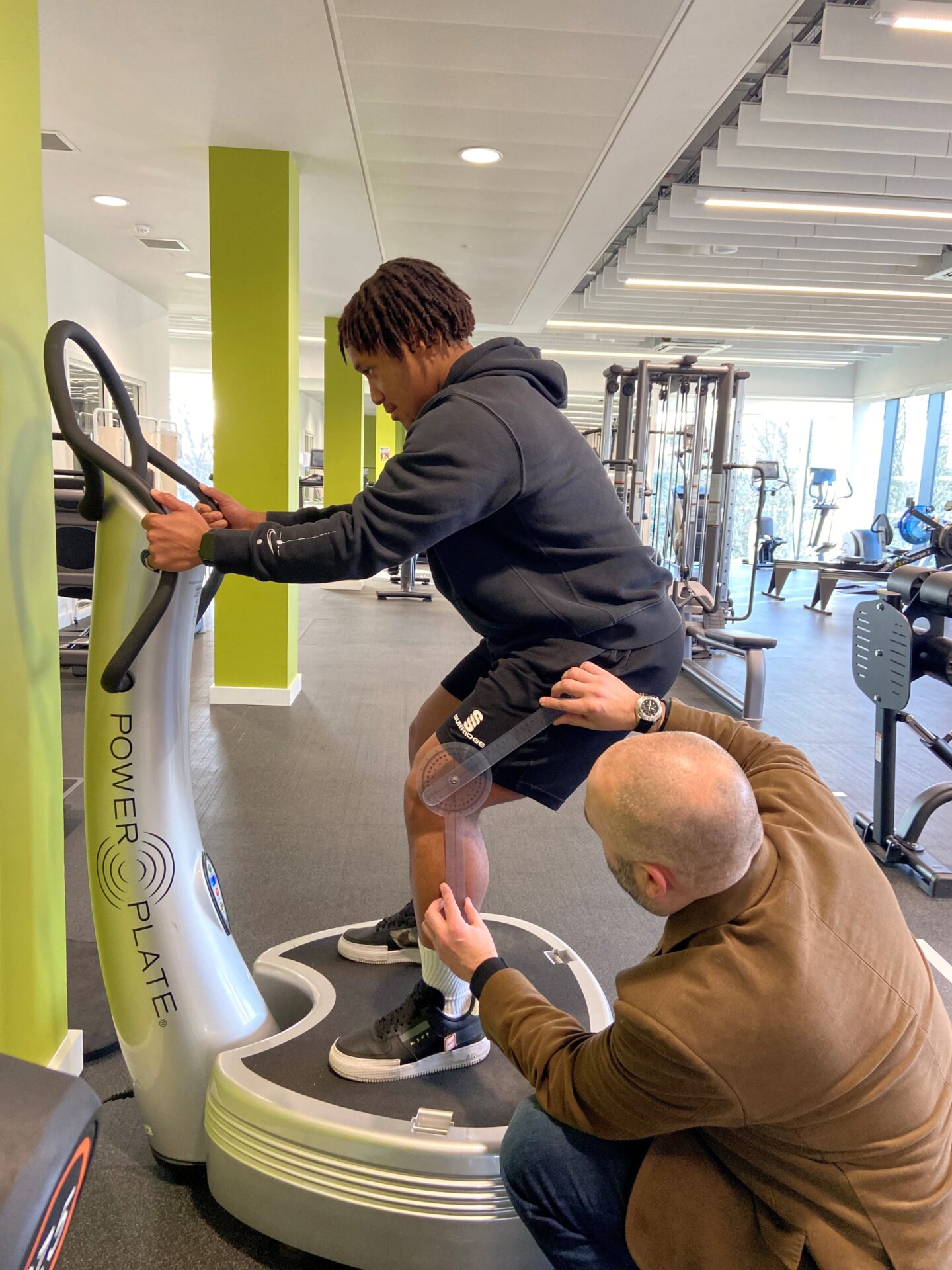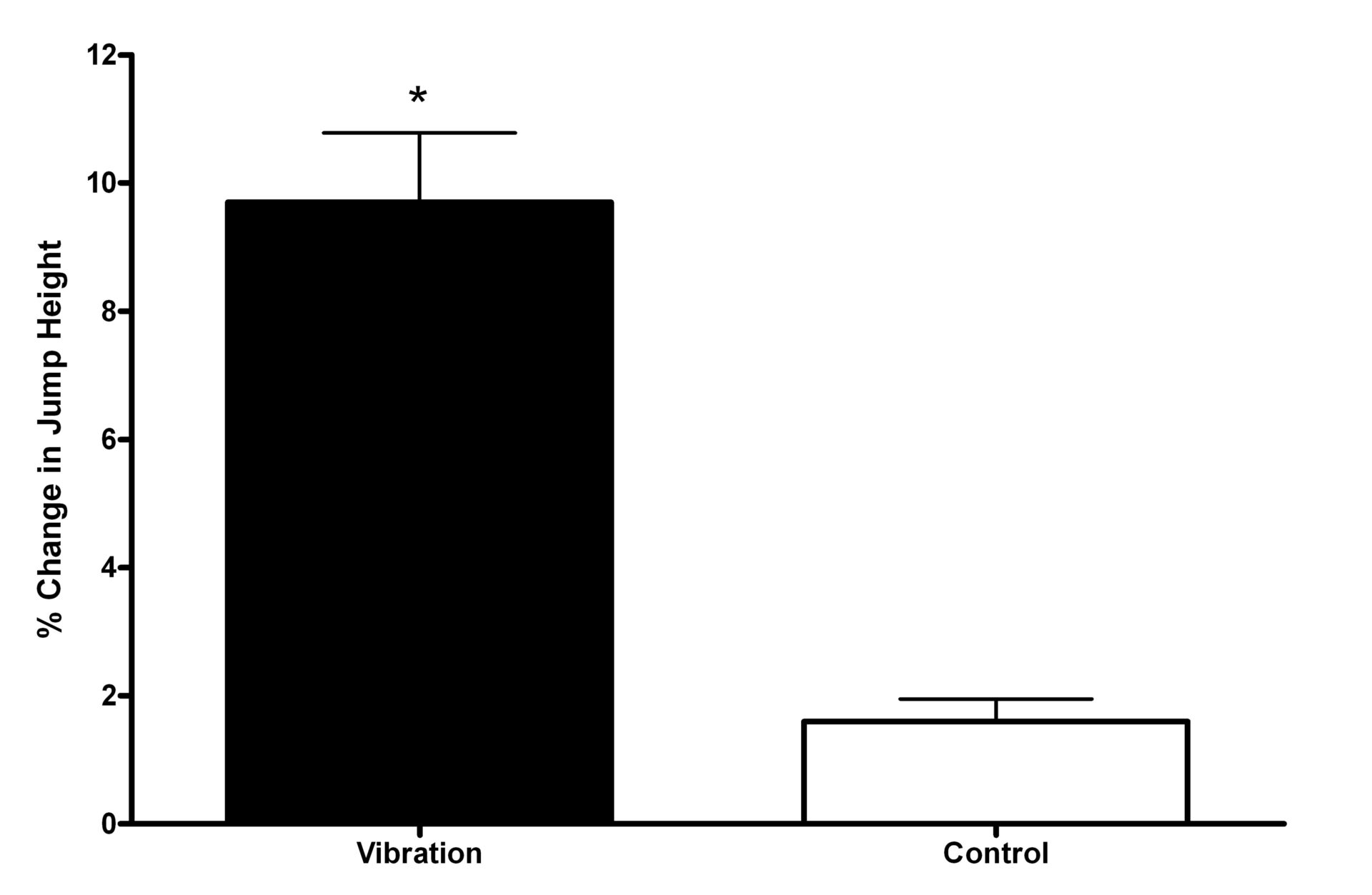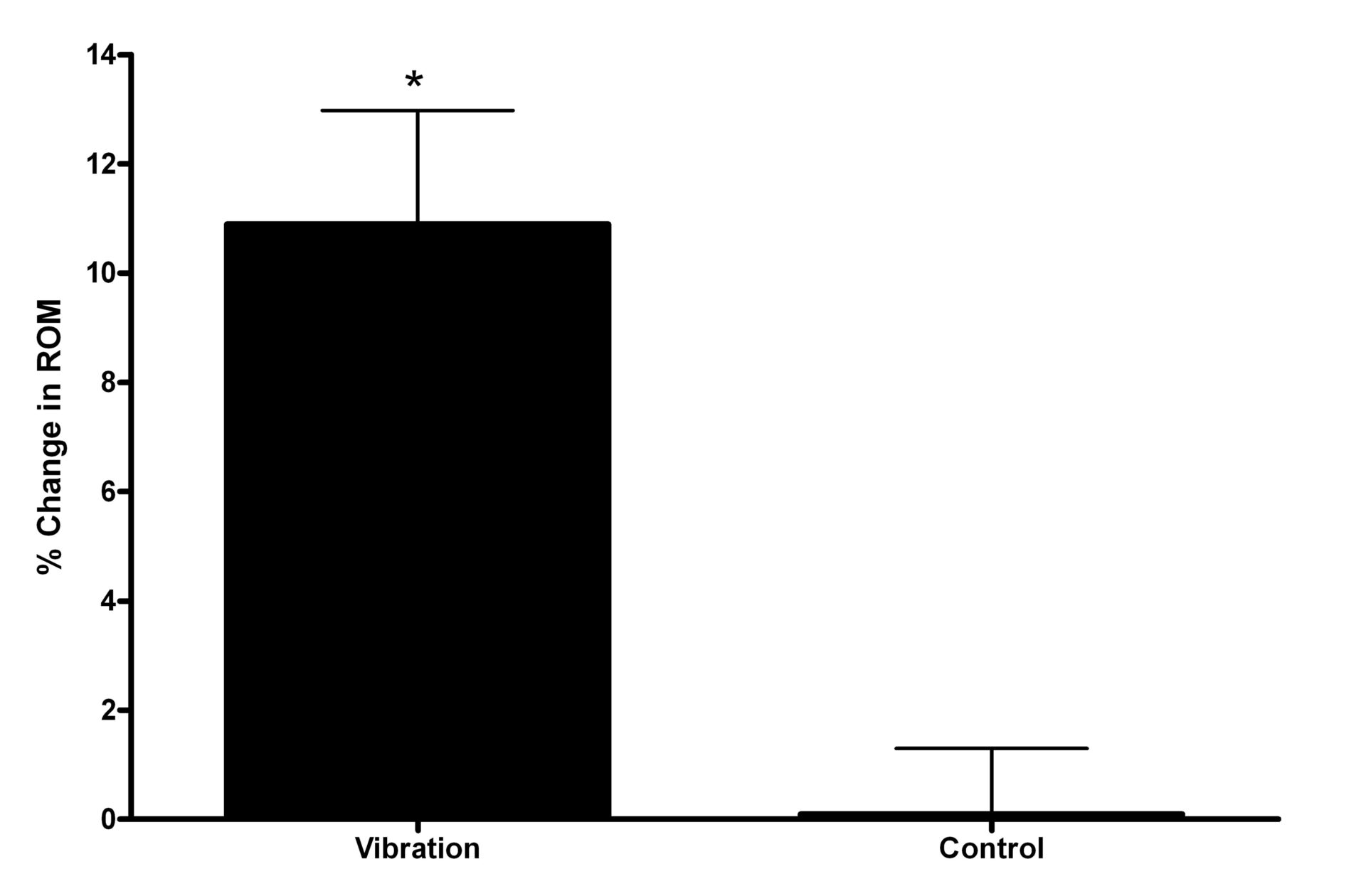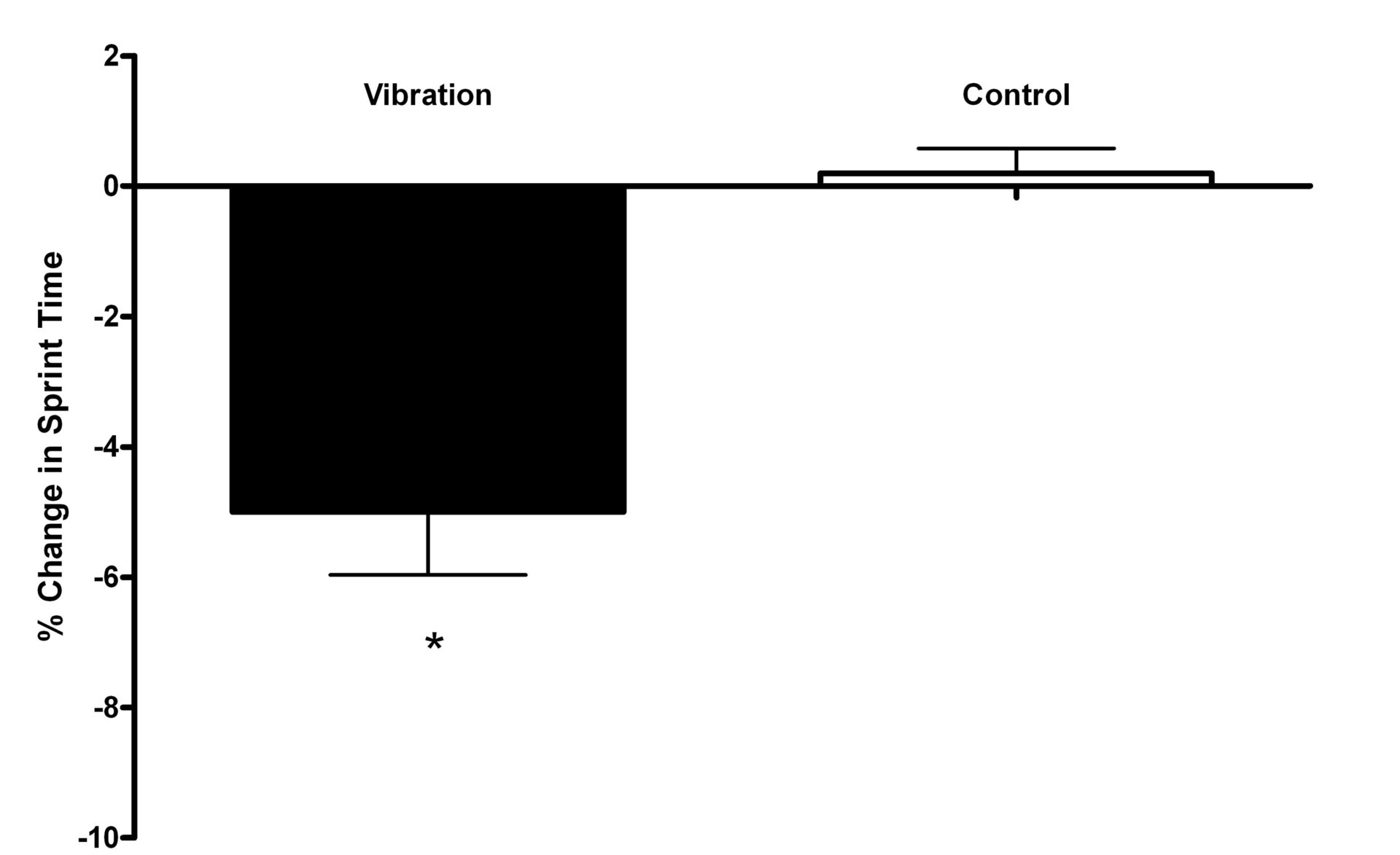Association football, or soccer, is classified as an intermittent sport, during which the aerobic system is highly tested throughout the 90 minutes of a match. Due to the high density of matches, professional soccer is associated with constraints in implementing supplemental training into players regimes. Whole body vibration training (WBVT) is a novel exercise modality, which is reported to stimulate the neuromuscular system, resulting in increased motor unit synchronisation, coactivation of the synergist muscles, and increased reciprocal inhibition of the antagonist muscles. WBVT has been shown to improve performance measures in various athletic populations, including professional soccer goalkeepers, without dramatically increasing overall training load. However, there is currently limited data on the specific benefits of WBVT for outfield soccer players. With institutional ethics approval, and in accordance with the latest delineation of the World Medical Association’s Declaration of Helsinki, 21 professional male soccer players (age = 18 ± 2 yrs.; height = 1.8 ± 0.1 m; mass = 76 ± 8 kg) from an English Premier League Academy were recruited for the current study. All players completed three each of vertical countermovement jump, 30 m sprint, and range of motion (ROM) prior to, and on completion of, the five-week study. Jumps were performed on a Just Jump Mat (Probotics Inc. USA) in accordance with previous research. Sprints were performed in football boots, from a standing start, on an outdoor grass surface to increase ecological validity. A rest period of 60s was used between each sprint to allow muscles to replenish phosphocreatine and reduce the risk of muscular fatigue. ROM tests utilised a traditional sit-and-reach box. Players in the intervention group (n = 11) undertook progressive WBVT (frequency = 25 Hz – 45 Hz, amplitude = 4 mm), twice-a-week on a Power Plate Pro5 platform (Table 1). Players performed static and dynamic squats, initiating isometric and isotonic actions, to alter muscle activation. Knee angles whilst on the platform were measured using a goniometer (Figure 1). The control group (n = 10) followed the same protocol, without vibration exposure (0 Hz, 0 mm). A 2×2 repeated measures ANOVA reported a significant group x time interaction (P < 0.001) across all measures. Specifically, there were significant improvements in the WBVT group’s jump performance pre- 48.5 ± 2.6 cm to post- 53.2 ± 3.7 cm intervention (P < 0.001) (Figure 2); ROM pre- 24 ± 7.3 cm to post- 26.4 ± 7.3 cm intervention (P < 0.001) (Figure 3); and 30m sprint pre: 4.3 ± 0.17s, post: 4.09 ± 0.25s (P < 0.001) (Figure 4). No significant differences (P > 0.05) were found pre- to post- in the control group. Results show progressive in-season WBVT has a performance enhancing effect in professional soccer players. Considering the density of matches in professional soccer, and the low time commitment and effectiveness of WBVT, it may be a useful training modality to enhance performance qualities in outfield soccer players.
The Biomedical Basis of Elite Performance 2024 (University of Nottingham, UK) (2024) Proc Physiol Soc 62, C15
Poster Communications: Performance improvements in professional soccer players following a whole-body vibration training programme
Adam Hawkey1, David Morrison2, John Babraj3, Ramona Ritzmann4, Daniel Robbins5, Calogero Foti6, Kirill Micallef Starfrace7, Dominic Dobson8, Marco Cardinale9
1Saveetha Institute of Medical and Technical Sciences; University of Dundee; Ministry of Defence United Kingdom, 2The Royal British Legion United Kingdom, 3Abertay University United Kingdom, 4University of Freiberg Germany, 5Anglia Ruskin University United Kingdom, 6Tor Vegata University Italy, 7Triagon Academy; University of Malta; Mater Dei Hospital Malta, 8Saveetha Institute of Medical and Technical Sciences India, 9Aspetar Orthopaedic and Sports Medicine Hospital Qatar
View other abstracts by:
Where applicable, experiments conform with Society ethical requirements.





